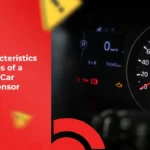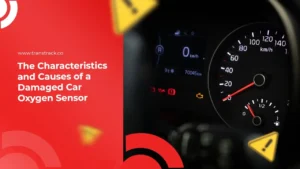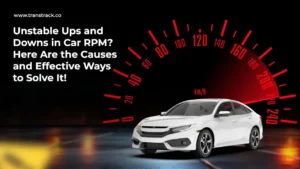11 Eco Driving Strategies, Save Money and Reduce Your Exhaust Emissions!
Posted on June 21, 2024 by Nur Wachda Mihmidati

Do you want to reduce your vehicle’s fuel consumption, save money, and help protect the environment? One effective way to achieve all of that is by implementing eco driving practices. Eco driving is not just about driving more efficiently, but also about changing your driving style to reduce exhaust emissions and improve road safety.
In this TransTRACK article, we will explore various eco driving tips and techniques that you can apply on a daily basis. From trip planning to judicious use of air conditioning, we will discuss simple yet effective ways to optimize your vehicle’s fuel efficiency.
Let’s see how eco driving can be a small but impactful step in protecting the environment and improving your vehicle’s efficiency!
What is Eco Driving?
Eco Driving is a concept and driving style that aims to reduce fuel consumption and exhaust emissions, while improving energy efficiency. This practice not only benefits the environment, but can also save on vehicle operating costs.
Benefits of Eco Driving
Here are the benefits of Eco Driving. Let’s discuss them further:
Fuel Saving
By adopting eco driving techniques, drivers can reduce their vehicle’s fuel consumption. Smooth acceleration and braking, as well as maintaining a steady speed, are some of the ways to achieve these savings.
Reduced Vehicle Maintenance Costs
Driving in a gentler eco driving style can reduce stress on vehicle components, such as the brakes, transmission, and engine. This can reduce the need for costly repairs and maintenance, extend the life of the vehicle, and save long-term costs.
Reduced Greenhouse Gas Emissions
Eco driving helps reduce exhaust emissions from vehicles, such as carbon dioxide (CO2) and other gases that contribute to global warming and climate change.
Reducing Individual and Corporate Carbon Footprints
By reducing fuel consumption and exhaust emissions, eco driving helps reduce individual and corporate carbon footprints. This is important for promoting environmental responsibility and contributing to global efforts to tackle climate change.
Improved Driving Safety
Eco driving practices often involve a more cautious and anticipatory driving style. This not only helps reduce fuel consumption, but also improves driving safety by reducing the risk of accidents.
Reduced Risk of Accidents
Through smoother acceleration, slower braking, and more thoughtful route planning, eco driving drivers can reduce the risk of accidents. This practice promotes situational awareness and quicker response to road and traffic conditions, which in turn reduces the likelihood of accidents.
Strategies for Eco Driving
Here are some practical strategies for eco driving:
Trip Planning
Plan your travel route before you leave. Use maps or navigation apps to find alternative routes that avoid traffic jams and longer travel distances.
Vehicle Maintenance
Ensure your vehicle is in good condition by performing routine services such as oil changes, electrical system checks, and regular brake checks. Ensuring proper tire pressure is also important to optimize fuel efficiency.
Gentle Acceleration
Avoid revving the engine by accelerating slowly. Hold the throttle down to avoid overworking the engine, which can increase fuel consumption.
Smooth Braking
Keep your distance from the vehicle in front of you so that you can plan for slow and smooth braking. This will reduce the need for sudden, energy-wasting braking.
Use Gears Wisely
When accelerating or decelerating, select the gear that best suits your needs. Use a higher gear at a steady speed to reduce engine revs and save fuel.
Avoid Excessive Idling
If you have to stop for a long time, such as while waiting in a parking lot or in a queue, turn off your vehicle’s engine. A stationary engine wastes fuel unnecessarily.
Control AC Usage
Use your air conditioner wisely. Turn off the AC when not needed, or use the fresh air blowing mode if the temperature outside is quite comfortable.
Choose the Fastest and Quickest Route
When choosing a travel route, choose the path that has the least congestion and fastest travel time. This can help you avoid using excessive fuel due to heavy traffic.
Avoid Unnecessary Loads
Remove unnecessary items from the trunk of your vehicle. Overloading can increase fuel consumption as the engine has to work harder to move the vehicle.
Keep a Steady Speed
Avoid frequent acceleration and deceleration, as this can reduce fuel efficiency. Try to keep your vehicle speed in line with the posted speed limit.
Choose an Efficient Vehicle
If possible, consider using a more fuel-efficient vehicle. Hybrid or electric cars, for example, have lower fuel consumption and fewer exhaust emissions compared to conventional vehicles.
By applying these tips consistently, you can optimize your vehicle’s fuel usage and reduce the environmental impact of your driving.
In conclusion, eco driving is not just about saving fuel, but also about reducing exhaust emissions and maintaining a cleaner and healthier environment. By implementing eco driving practices, you not only contribute to the preservation of the environment, but you can also save on your vehicle’s operational costs.
If you want to get serious about monitoring and improving your vehicle’s fuel efficiency, TransTRACK is here to help. With our Fuel Monitoring solution, you can monitor fuel consumption in real-time, identify inefficient usage patterns, and take appropriate actions to improve your eco driving performance.
Contact us for more information about our Fuel Monitoring solution and start driving towards a greener and more cost-effective future!
Recent Post
Excavator Indicator Panel Symbols and Their Functions!
November 25, 2025The Characteristics and Causes of a Damaged Car Oxygen Sensor!
November 21, 2025Topic :
 Bahasa Indonesia
Bahasa Indonesia









